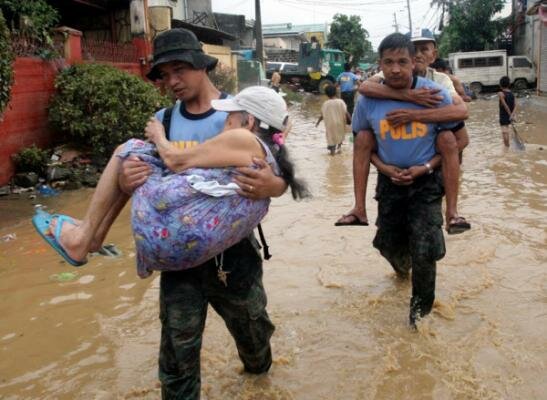Natural Disasters Becoming Costlier
Natural disasters in Asia in 2011 could well prove to be the costliest ever, experts say.
 "Never before has this world suffered so much economic loss due to natural disaster, most of which has been in Asia and the Pacific," Sanjay Srivastava, UN regional adviser for disaster risk reduction, told IRIN in Bangkok.
"Never before has this world suffered so much economic loss due to natural disaster, most of which has been in Asia and the Pacific," Sanjay Srivastava, UN regional adviser for disaster risk reduction, told IRIN in Bangkok.
Of the global US$270 billion of economic losses to natural disasters in 2011, 90 percent was in Asia, he said.
From earthquakes in New Zealand and Japan, to heavy flooding in Australia and Asia, economic losses in the first nine months of 2011 came to $259 billion, of which only about $52 billion was insured, according to Munich Re, a global insurance company which covers natural disasters.
The $220 billion of damage caused by the earthquake and tsunami in Japan accounted for the bulk of the losses, according to Srivastana.
In addition, "the unprecedented flooding in South-East Asian countries this year is estimated to have caused a cumulative production loss of about $6.3 billion or 0.9 percent of the combined gross domestic product [GDP] of Cambodia, Lao People’s Democratic Republic, the Philippines, Thailand and Vietnam,” said a 9 December statement by the UN Economic and Social Commission for Asia and the Pacific (ESCAP), the UN’s regional development arm for the Asia-Pacific region.
"The costliest natural catastrophe [in Southeast Asia] may be the Thailand floods with overall economic losses in the billions," said Michael Able, a spokesman for Munich Re. See Thai Slideshow:
Yet less than 9 percent of costs in the Asia Pacific region were insured, his organization says.
While economic and human risks are high due to increasing urban populations, insurance coverage in many countries in the region remains too low to effectively protect against hazards.
"Most of the burden will fall on the state which will have to cover recovery and rehabilitation, including the pressure to address the challenge of reducing future risks," said Sanny Jegillos, the UN Development Programme's regional coordinator for disaster risk reduction.
Population increases
"With growth in population, continued urbanization in exposed areas and increasing wealth, we also expect economic losses to rise further," said Gerd Henghuber, a climate change and renewable energy specialist with Munich Re.
Forty-three percent of Asian populations are urban dwellers and the region is home to half of the world's largest cities. "The stark reality is that disaster impacts in urban settings are felt much more intensely than in the past," said the Asian Disaster Preparedness Center in its 2020 strategy report.
Moreover, economic losses in the region are likely to hit the poor hardest, said Srivastava.
"To date, the region has borne the brunt of natural catastrophe losses. There is an urgent need for wider natural catastrophe insurance coverage," said Henghuber.
At the same time, unless governments incorporate disaster risk reduction into development plans, economic losses will rise in the future, according to Jegillos, who added: "Investments in disaster risk reduction are investments in development."
This article was first published in IRIN.

















